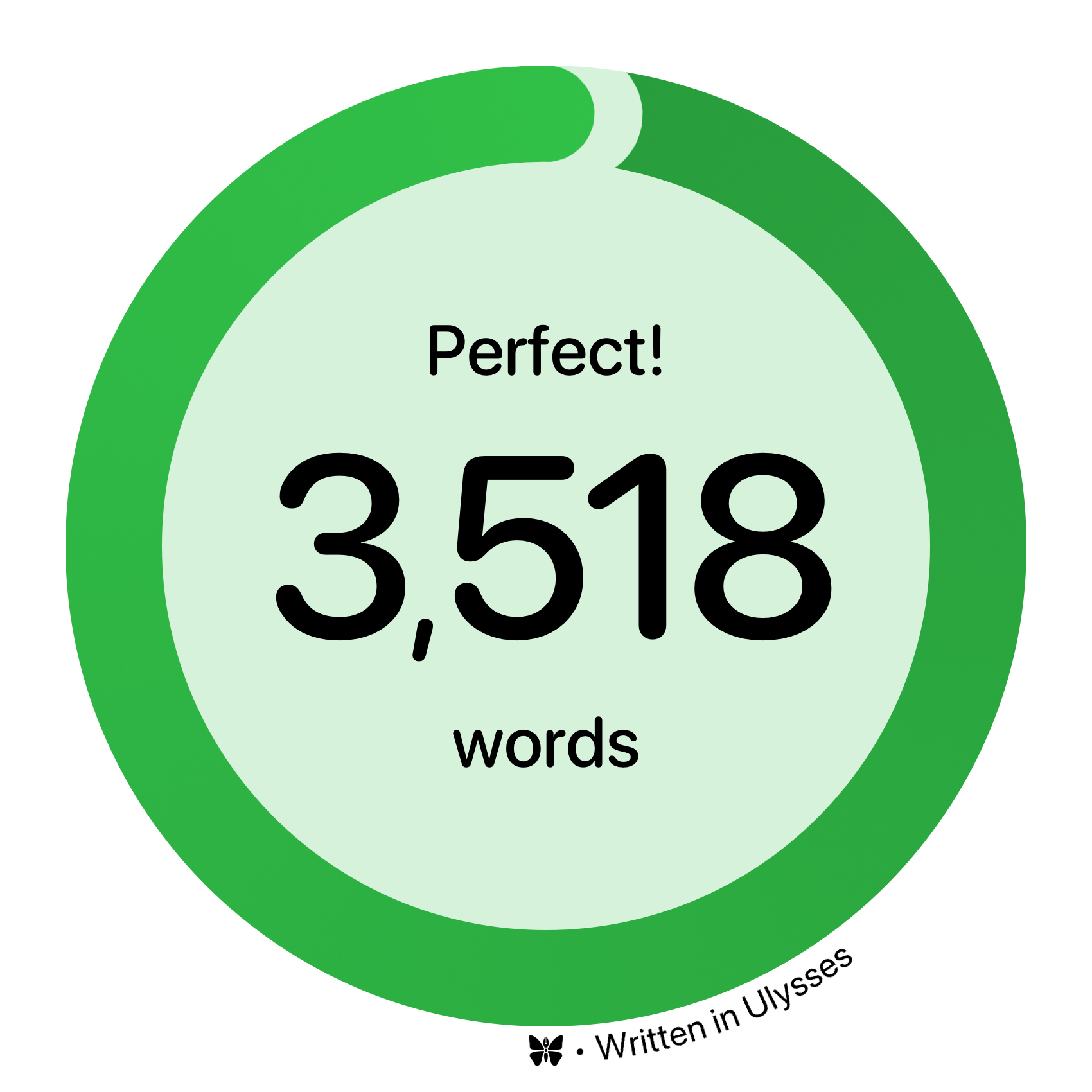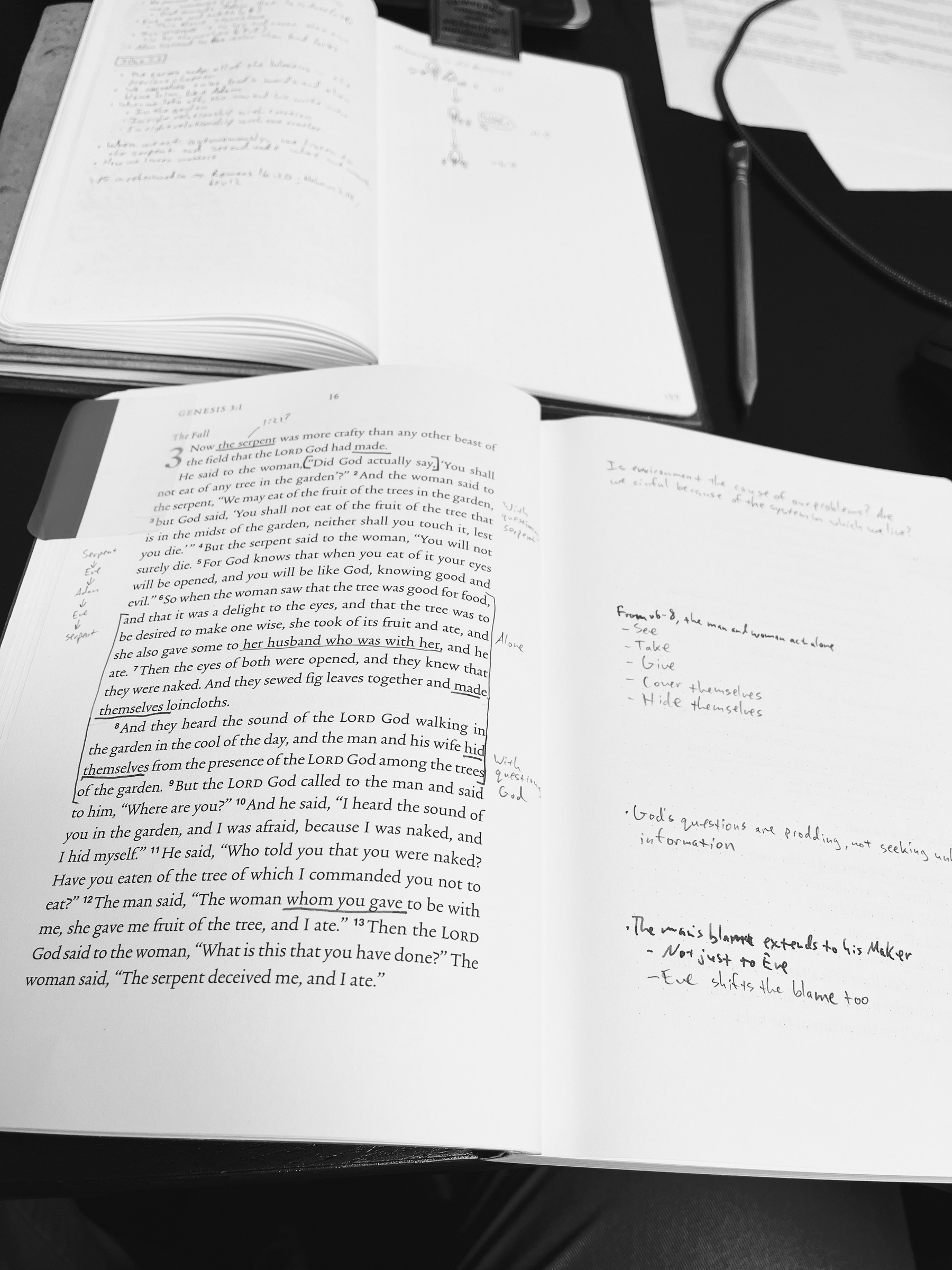Sermon prep
-
I should write about this at some point. In brief, the what is the main message of the passage while the why is the application or implication for us today. ↩︎
Preaching on the Christian life and mental health this coming Lord’s Day. While these sermons have been topical/doctrinal, I’ve continued to use an anchor text and this week’s is Psalms 42-43.

Some days, it seems like sermon writing just happens. I have the passage clearly in my head, the outline makes sense, words just seem to come.
Today is not one of those days.
my sermon notebook

For the last three weeks now, I have been preaching from a handwritten manuscript. After trying to work from a detailed outline instead, it is good to be back to writing out everything I intend to say. I am able to think more clearly on paper and I am also able to say things more clearly when I’ve written them out.
This has helped to bring down my sermon length but also to help me stick to the what & why1 of my sermon. I have also found Sunday mornings less stressful as I am able to read through my script focusing on how I will say the things that I have written rather than also trying to figure out the words that I will use.
But as a stationery geek, my favourite thing about doing this (and the reason why I hope to keep it going) is that I now have a notebook that is filling up with sermons. I love notebooks as objects and this one feels special now as well. I’m able to use the index in a way that will actually help me in the future and I am less relient on technology in the pulpit.

So that I’m not constantly turning pages while preaching, I opted for the larger B5-sized Leuchtturm1917 with a dot-grid.
The title and headings are written big in blue. I denote subheadings with a box around it, and the main body of my sermon is written used a green-black ink (Noodlers Zhivago). Scripture references that I intend to read out are noted in either an orange/brown (Diamine Ancient Copper) or a classic blue (Diamine Kensington Blue, one of the most well-behaved inks I have ever used).
On Sunday mornings when I look over my notes, I mark up my script with a red Uni-ball One 0.38 gel pen. I then write down the passage and title in the index and I’m good to go.
The script itself has averaged about 7-8 pages and that takes me around 35 minutes to get through. I stick fairly close to it but not as much as before I worked with an outline.
This part of Genesis has arrived. (Photo is of a page in volume 2 of Gordon Wenham’s commentary on Genesis.)

Bank Holiday so bit of a later, more relaxed start to looking at the passage I’ll be preaching in Sunday. Genesis 17 is a big chapter and it’s going to make for another interesting kids talk the following week…

One of the ways that I force myself to slowdown while studying a passage to preach is I write out the whole thing longhand. It’s an excuse to use nice stationery and to keep my handwriting in check. This week’s passage is Genesis 11:10-32.
Another script written. I’m quite far behind on reading for my training course so I’m looking forward to having a guest preacher for the last week of October. In the meantime, I’m really excited to preach the genealogy in Genesis 5.

For the very first time, I have managed to get a coffee stain on one of my commentaries. I guess now I know how to tell if it’s my copy of Wenham on Genesis 1-15 or someone else.
Sermon prep this week

Preparing to preach Genesis 3. I’ve got a Traveler’s Notebook for initial observations, an ESV Genesis scripture journal for highlights and some structure stuff, and commentaries by Calvin, Wenham, Kidner, and a pre-published one by another pastor here in Scotland.

Eventually this all makes its way into my Obsidian vault. Then it becomes a script written using Ulysses.